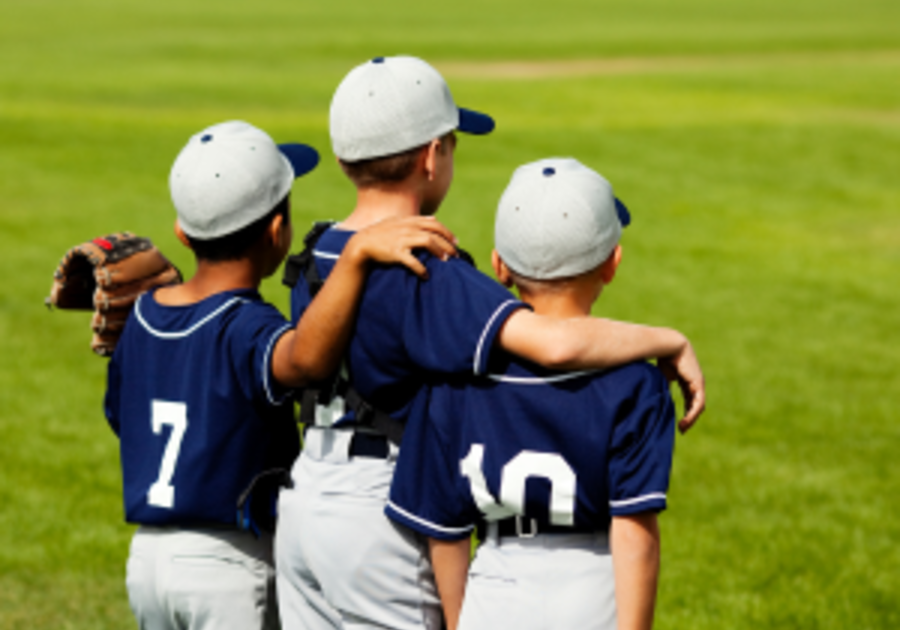Baseball season is here! Don't ask me why but this has always been my favorite sport. Growing up, I had an uncle who worked for the Pittsburgh Pirates. Every summer, we'd take that road trip east and during our time in my parents' home town, we'd go see a Pirates game. We'd have awesome seats, usually with the players' families and sometimes with celebrities who were Pirates fans like Michael Keaton.
As our children grew, both our sons played the game. Little League through high school, we drove to and sat through hundreds of games. This was our social circle. Friendships with other parents and families remain now that our kids are grown and have children of their own. I never played sports but my husband did. He felt it was important that they had "something" to do. I was always amazed and humbled by my kids' athletic abilities. I knew they didn't get that gene from me.
At this point, I see my grandchildren trying different sports and figuring out if they want to keep going. Looking back I see the benefits that came from sports for my kids so, as usual, I did some research and found some great insight on a website:
Participation in sports offers a lot of benefits for young children that extend far beyond the field. Not only does engaging in physical activities like sports promote overall physical health by keeping kids active and fit, but it also works wonders for their mental well-being. Through the ups and downs of sportsmanship, children learn very valuable life lessons about teamwork, perseverance, and resilience, all while creating friendships and social connections with teammates and coaches. Beyond the camaraderie and exercise, involvement in sports can create distance between them and substance use. By providing a healthy outlet for stress and negative emotions, sports empower children to cope with challenges in a positive and constructive way, which instills a sense of purpose and accomplishment that can help lessen or eliminate the need for harmful substances. According to Scripps Health, “Over the long term, regular participation in youth sports has been found to be as effective as medication in improving mental health and happiness. In fact, one study of teens with depression found that the effects of exercise actually lasted longer than those of antidepressants” (2023).
Through social connection and team building, we see sports serve as an outlet for young children to cultivate meaningful relationships and hone in on essential life skills. According to HealthDirect, “ It teaches them to cooperate, to be less selfish, and to listen to other children.
It also gives children a sense of belonging. It helps them make new friends and builds their social circle outside school. (2024). Whether it’s small talk with teammates during practice or celebrating a win together, sports provide a place to help forge lasting bonds with teammates and coaches. Through the ebb and flow of team dynamics, children not only learn mutual support but also gain conflict resolution skills. Within team sports, kids develop the ability to resolve discrepancies, find common ground, and work towards shared goals. These experiences lay a solid foundation for building healthy relationships and navigating social dynamics with confidence and grace. As children are able to learn conflict-resolution skills and be comfortable with their peers, they are less likely to rely on substances when they are experiencing discomfort.
When it comes to substance use prevention and practicing positive coping mechanisms, sports play a pivotal role in steering young children toward healthy habits and resilient mindsets. Through physical activity and competition, sports offer children a constructive outlet for managing stress and negative emotions, significantly reducing the temptation to seek a solution in harmful substances. The act of engaging in sports releases tension, promotes relaxation, and nurtures a sense of well-being that serves as a powerful buffer against substance use. According to NIH, “Eighty percent of the studies found sport participation associated with decreased illicit drug use” (2014). Many people use substances to fill these voids, and if they are already being filled, there is less temptation to use substances. Involvement in sports also cultivates a sense of purpose and achievement in children, boosting their self-esteem and confidence. As they set and achieve goals, navigate challenges, and have success on the field, children develop an inner resilience that decreases the chance of risky behaviors like substance use, empowering them to channel their energies towards healthier pursuits.
It’s evident that the benefits of playing sports extend far beyond the field with young children. Through the lens of social connection, emotional well-being, and substance use prevention, we’ve seen how sports serve as a catalyst for personal growth and resilience. From creating lasting friendships to instilling a sense of purpose and accomplishment, the impact of sports on children’s lives is extremely apparent. As parents, educators, and mentors, you can support your children in their athletic endeavors, recognizing the many lessons and opportunities for growth that sports provide. Empowering your children to thrive both on and off the field while equipping them with the skills, confidence, and resilience can help your children to navigate through their emotions.
By: Eva N.
References:
Scripps Health. (2023). What Are the Surprising Benefits of Youth Sports Programs? Scripps Health. Retrieved from https://www.scripps.org/news_items/7580-what-are-the-surprising-benefits-of-youth-sports-programs#:~:text=Over%20the%20long%20term%2C%20regular,longer%20than%20those%20of%20antidepressants.
Healthdirect. (n.d.). Developing life skills through sports. Healthdirect. Retrieved from https://www.healthdirect.gov.au/developing-life-skills-through-sports#:~:text=better%20about%20themselves.-,Social%20benefits,their%20social%20circle%20outside%20school.
Pedersen, E. R., & LaBrie, J. W. (2014). Partying before the party: Examining prepartying behavior among college students. Substance Use & Misuse, 49(1-2), 173–180. https://doi.org/10.3109/10826084.2013.825805



